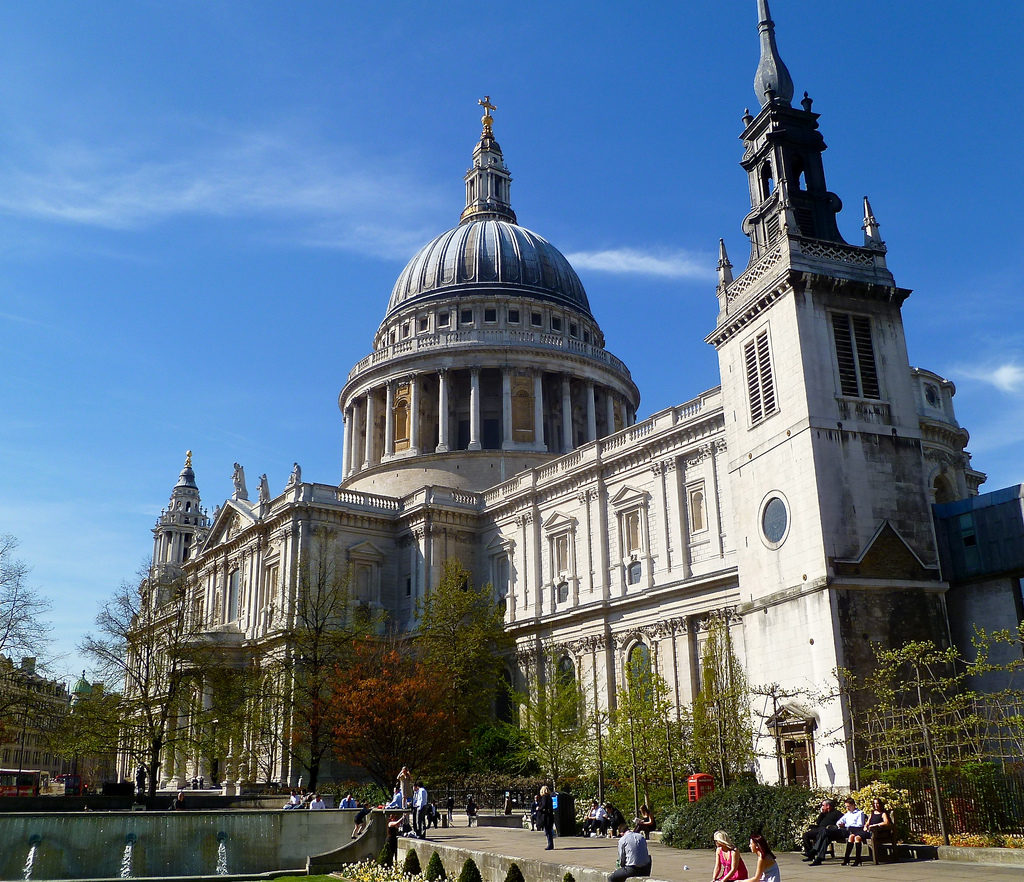September 5th 1666 is the date on which the Great Fire of London ended. This was a significant event for the city both as it was and for how it was to become. The fire began on the night of September 2, as a small fire on Pudding Lane, in the bakeshop of Thomas Farriner, (baker to King Charles II). Shortly after midnight one of Farriner’s servants awoke to find the house on fire. Most houses in the city were made of wood and packed closely together, the fire spread rapidly helped by the strong wind which blew that night. Further problems came as the fire reached the riverside docks and warehouses packed with combustible materials (such as hay, oil, spirits, coal) added to the conflagration.
To put the fire out was the task of private fire brigades, insurance companies took it upon themselves to offer fire protection and those with insurance had a red flame mark on the building (you can still see some of these today). Using only buckets of water there was little they could do. Ironically, a fire some thirty years earlier had damaged a large part of the area between Pudding Lane and the river and this natural firebreak was the one thing which prevented the fire from taking greater hold. Normal procedure would be to destroy other houses and create a larger firebreak but the Mayor was unwilling, he seemed unconcerned by the fire, feeling it would put itself out during the night and so he went back to bed. By morning this misjudgement became clear and the fire burned for three days although, astonishingly, only four people died.
Much of what we know of London life in the 1660s comes from the great diarist Samuel Pepys, his immediate reaction was to head into his garden to bury some valuables – these included a parmesan cheese and some bottles of wine. His comment on the first day of the fire was, “September 2nd: Jane (his maid) comes and tells us that she hears that above 300 houses have been burned down by the fire…..poor people staying in their houses as long as till the very fire touched them, and then running into boats or clambering from one pair of stairs by the waterside, to another…I saw a fire as one entire arch of fire above a mile long: it made me weep to see it. The churches, houses are all on fire and flaming at once, and a horrid noise the flames made and the cracking of the houses.”
The fire was the second tragedy to hit London in successive years, 12 months earlier the plague had killed 68,000 in the city. At that time the king, Charles II, only restored to the crown four years earlier, had been criticised for leaving the city to stay safe in the countryside. This time he remained and controlled the clean-up effort and was at the heart of planning the new London which appeared. The fire burned down over 13,000 houses, 44 government or city buildings and 84 churches as well as the old St Paul’s Cathedral. Much of what you will see today when you visit London was created in the wake of the fire. Christopher Wren’s new St Paul’s Cathedral was completed in 1710 and was the centrepiece of the new city.
Farrinor escaped blame for the fire, claiming to a parliamentary investigation that his ovens had definitely been put out. Tragedy often offers the greatest chance to blame those who are not trusted, their innocence becoming an inconvenient fact to be overlooked. In the spirit of the time it was not long before Papists were blamed. In 1678, during the contrived Popish Plot, Titus Oates declared that Jesuit priests were about to set fire to the city again, prompting a Commons resolution declaring that ‘the City of London was burnt in the year 1666 by the Papists’. In 1685 the Duke of Monmouth, rebelling against the new King, the Catholic James II (the brother of Charles II and one who had fought to put the fire out), accused James of deliberately starting the fire. The Monument to the fire was constructed in the 1670s and is still a great landmark in the city. If you get the chance to climb the steps to the top you will have superb views over the city (and get a certificate for your travails). Amazingly, it was not until 1831 that the inscription on Monument, blaming ‘the treachery and malice of the Popish faction’, was removed.
Have you seen the fire marks around London, or been to the top of the Monument?
Related articles

